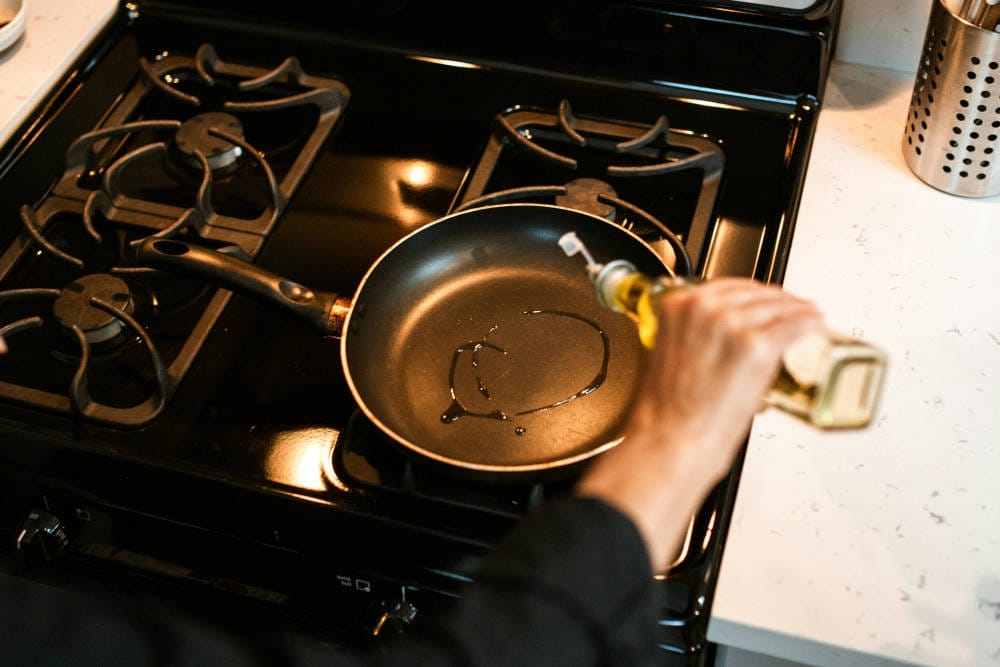What Is the Best Oil for Frying?
Without a doubt, extra virgin olive oil stands out as the best choice for frying, thanks to its content of monounsaturated fats and valuable secondary components such as vitamins, phytosterols, squalene, and phenols.

Is It Healthier for Us?
Frying often comes with a sense of guilt due to concerns about nutritional value and its impact on health. However, recent studies have shown that cooking fresh vegetables with extra virgin olive oil increases their total phenol levels—antioxidant compounds beneficial for health. In contrast, boiling vegetables in water leads to a decrease in phenol levels. The antioxidant properties and high oleic acid content of extra virgin olive oil not only enhance health benefits but also improve cooking stability, making it the healthiest and tastiest option regardless of the cooking method.
When cooking with oils, an exchange of nutrients occurs. Compared to other oils, extra virgin olive oil enhances the health benefits and flavor of the foods cooked with it. For example, the presence of extra virgin olive oil during cooking increases the proportion of monounsaturated fats. Additionally, fat-soluble vitamins and other nutrients, such as glucosinolate compounds in broccoli and carotenoids in carrots, are better absorbed when cooked with extra virgin olive oil.
Does Olive Oil Make Fried Foods Taste Better?
Yes, olive oil outperforms other oils in terms of flavor as well. During frying, the polyunsaturated fats in extra virgin olive oil form a thin, crispy crust around the food, “trapping” its flavors and aromas. This crust also resists fat absorption better, helping retain the moisture within the food. However, it’s important to let the olive oil heat up sufficiently before adding the food. If the oil is too cold, it will be absorbed by the food and negatively affect its texture.
What Is the Ideal Temperature for Frying with Olive Oil?
The smoke point of an oil is the temperature at which it begins to smoke continuously when heated. It’s essential never to use any oil for frying at or beyond its smoke point, as the compounds that break down at these high temperatures release unpleasant odors and are harmful to health by producing free radicals. The ideal frying temperature is between 170°C and 180°C. A typical extra virgin olive oil has a smoke point of up to 190°C, while a high-quality extra virgin olive oil with acidity below 0.2% can withstand temperatures up to 215°C. Acidity levels not only serve as a parameter for categorizing the oil’s quality but also provide insight into its heat resistance.
How Many Times Can You Reuse Olive Oil?
Extra virgin olive oil can be reused three to four times for frying, provided it is filtered to remove food residues and stored in a stainless steel or glass container covered and kept in a shaded area.
How Does Olive Oil Differ from Other Oils and Seed Oils?
The differences lie in health benefits and cooking durability. Olive oil is superior in monounsaturated fats and antioxidant elements, and it’s a natural product without chemical processing. When it comes to cooking, olive oil demonstrates lower degradation and toxicity levels compared to seed oils.
Extra Virgin Olive Oil Seems Expensive. What Are the Alternatives?
Extra virgin olive oil represents the highest category of fruit juice from olives. As a more affordable option, “virgin olive oil” can be used. This category is indicated on the bottle label and differs from extra virgin due to exceeding permissible chemical and taste standards. Nevertheless, it retains the composition and health benefits of a natural juice.
Another economical solution for frying is refined olive oils, usually labeled simply as “Olive Oil.” These have undergone chemical processing and have extra virgin or virgin olive oil added for improved aroma and flavor. All these categories of olive oil surpass seed oils in health benefits and exhibit lower degradation and toxicity levels.
After all, olive oil is a national product, whereas the seeds used for seed oils are imported.
